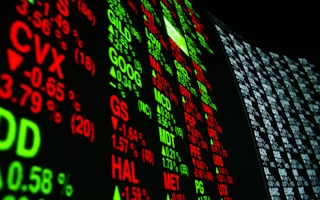With global temperatures rising at an alarming rate, the race is on to lower the world’s consumption of fossil fuels and accelerate the adoption of greener forms of energy. Among the most discussed remedies are those that would use market forces to make traditional fuels more expensive; ideas include putting a price on carbon and protecting natural resources that remove carbon dioxide from the atmosphere.
To continue reading, subscribe to Eco‑Business.
There's something for everyone. We offer a range of subscription plans.
- Access our stories and receive our Insights Weekly newsletter with the free EB Member plan.
- Unlock unlimited access to our content and archive with EB Circle.
- Publish your content with EB Premium.
At first glance, market-based strategies might seem appealing. After all, as Adam Smith noted in The Wealth of Nations, “It is not from the benevolence of the butcher, the brewer, or the baker that we expect our dinner, but from their regard to their own interest.” In other words, the best way to convince emitters like Chevron or General Motors to help save the planet must be to appeal to their profit motive, right?
Not necessarily. While free markets may have steered much of the world toward a wealthier, healthier future, placing our faith in Smith’s “invisible hand” to win the fight against climate change would be a tragic mistake.
In a capitalist economy, our relationship with the future is guided by economic forces that are notoriously fickle. Commodities like sugar, soybeans, oil, and gas are relatively standardised products, meaning that they can be traded instantly and globally through the use of derivative contracts. But because these contracts price in assumptions about the future, commodity prices can fluctuate wildly. And that variability complicates environmental planning in three important ways.
For starters, price unpredictability makes it virtually impossible to detect the depletion of natural resources merely by looking at short-term changes in value. On the contrary, the more uncertainty there is about the scarcity of a resource, the greater the price swing, which only compounds the planning difficulty. As the French mathematician Nicolas Bouleau observed in a 2013 paper, “markets cannot spell out trends; it is absolutely impossible on an ontological level.” If resource-related trends were discernible from outcomes in financial markets, those who could see them would trade accordingly and the trends would disappear.
Second, uncertainty about the future price of any commodity makes it exceedingly risky for producers to invest in whatever new technologies might help reduce greenhouse-gas emissions. For most producers and consumers, it usually makes more economic sense to maintain the status quo than to change their habits, even if they know that the status quo will be disastrous for the environment.
Finally, although it’s possible to put a price tag on precious but non-marketable natural resources—like the capacity of a boreal forest to absorb atmospheric CO2—the price fluctuations for resources that can be traded make most conservation strategies untenable in the long run. That’s because at some point, the volatile price of the tradable resource will exceed the fixed cost of destroying it.
The pressure to plunder can be especially strong when a combustible resource is found. As Canadian Prime Minister Justin Trudeau conceded at a March 2017 energy conference in Houston, Texas, “no country would find 173 billion barrels of oil in the ground and just leave them there.”
“
Financial volatility is like a superstorm on an already-warming planet. Not only does it make it impossible to see what lies ahead; it is itself also a force of environmental devastation, leaving irreparable damage in its wake.
Financial volatility is like a superstorm on an already-warming planet. Not only does it make it impossible to see what lies ahead; it is itself also a force of environmental devastation, leaving irreparable damage in its wake. “Market volatility is ill suited to environmental cycles,” as MIT’s Janelle Knox-Hayes puts it. “Economic systems recover from market turmoil in time. Environmental systems do not have the same luxury; their cycles of reproduction are inflexible.”
Ecological devastation should be expensive, and the world no doubt needs workable strategies to move people away from dirty sources of energy toward greener, more sustainable alternatives. But to defer to markets to overcome the environmental woes of capitalism is a blueprint for disappointment—and a recipe for planetary suicide.
Ivan Ascher is an associate professor of political science at the University of Wisconsin-Milwaukee. He is the author of Portfolio Society: On the Capitalist Mode of Prediction.
Copyright: Project Syndicate, 2018.
www.project-syndicate.org











